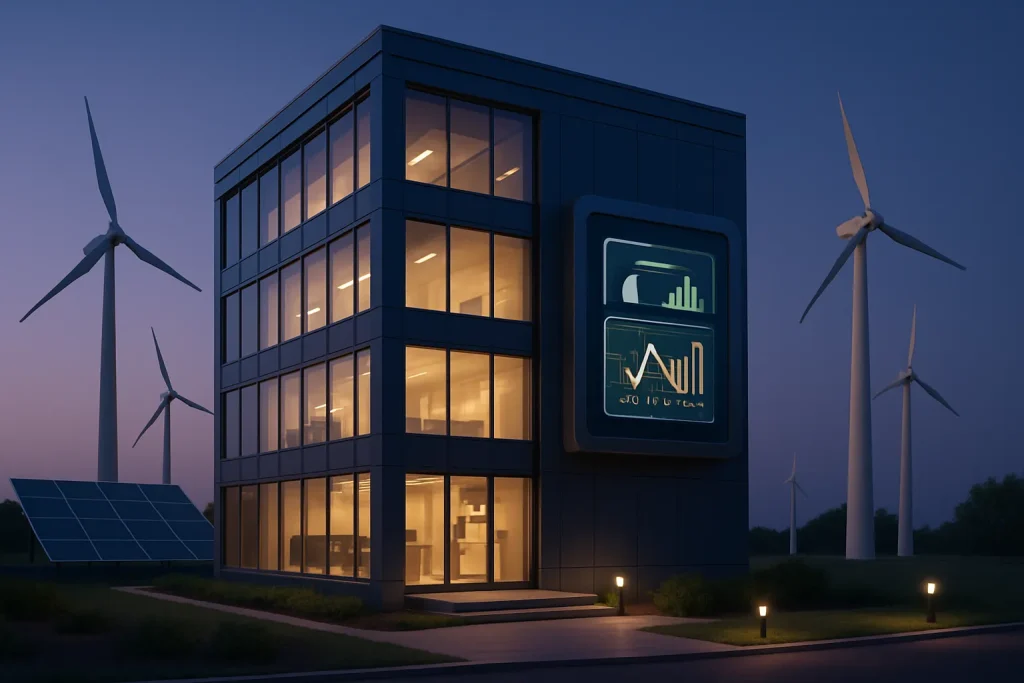Energy efficiency is rapidly evolving with the advent of smart infrastructure technologies. This article explores real-world examples of how these innovations are revolutionizing various sectors, from buildings to transportation. Drawing on insights from industry experts, we’ll examine eight key areas where smart solutions are making a significant impact on energy conservation and sustainability.
- Smart Building Cuts Energy Use by 70%
- Solar EV Stations Reduce Grid Demand
- Predictive Analytics Boost Renewable Energy Efficiency
- Smart Grids Optimize Electricity Distribution
- IoT HVAC Systems Adapt to Occupancy Patterns
- Intelligent Streetlights Conserve Energy in Cities
- Smart Water Meters Detect Leaks Quickly
- AI Optimizes Waste Collection Routes
Smart Building Cuts Energy Use by 70%
A great example I’ve seen is the Edge building in Amsterdam. It’s a commercial space, but the technology is mind-blowing and entirely real. The lighting system alone is powered by Ethernet cables and packed with sensors that track light, motion, and temperature. They use that data to adjust heating and lighting in real-time based on how people move through the space.
What stood out to me was how the building learns patterns, such as which spaces are going to be empty on a given day, and actually shuts those zones down to save on energy. That’s how they cut electricity use by 70 percent compared to typical office buildings. It generates more energy than it consumes thanks to smart solar integration.
To me, the takeaway is that smart infrastructure isn’t just about gadgets. It’s about design that responds to how people actually live or work.
 Kiel Kellow
Kiel Kellow
Business Owner, Kellow Construction
Solar EV Stations Reduce Grid Demand
Due to recurring power shortages and load-shedding in Pakistan, there’s a growing need to reduce strain on the electrical grid. We have implemented smart EV charging stations powered by solar canopies in municipal areas. These stations are connected to a smart platform that tracks energy use, adjusts supply based on vehicle charging demand, and maximizes solar input. When not in use, the stations send surplus energy back to the grid. This system provides clean mobility while improving local energy resilience, cutting daytime demand by around 35%.
 Summaiya Nisar
Summaiya Nisar
VP, Marketing, Sympl Energy
Predictive Analytics Boost Renewable Energy Efficiency
One of our most effective infrastructure upgrades came from implementing real-time solar monitoring paired with predictive weather analytics. This allowed us to regulate how much power we drew from stored battery reserves based on sunlight forecasts. We used to rely on generalized estimates, which often caused unnecessary strain on our generators. The smart system gave us visibility, precision, and greater confidence to push our renewable energy sources further.
The result was a nearly 50 percent increase in battery lifespan and greater energy independence across the estate. This outcome encouraged us to reinvest in solar expansion and move closer to off-grid capability. Technology did not just make things greener; it made them make more sense. We simply became better stewards of what we already had.
 Lord Robert Newborough
Lord Robert Newborough
Owner, Rhug Organic Farm & Rhug Ltd
Smart Grids Optimize Electricity Distribution
Smart grids are revolutionizing energy distribution by optimizing the flow of electricity. These advanced systems use real-time data to balance supply and demand, reducing energy losses during transmission. They can quickly identify and isolate power outages, minimizing downtime and improving overall reliability.
Smart grids also enable the integration of renewable energy sources, making the power system more sustainable. By providing consumers with detailed information about their energy usage, smart grids empower people to make more informed decisions about their consumption. Consider exploring how smart grid technology could benefit your local community and advocate for its implementation.
IoT HVAC Systems Adapt to Occupancy Patterns
IoT-enabled HVAC systems are transforming the way buildings manage energy consumption. These intelligent systems use sensors to detect occupancy patterns and adjust heating, ventilation, and air conditioning accordingly. By automatically reducing energy use in unoccupied areas, they significantly improve efficiency without sacrificing comfort.
These systems can also learn from historical data to predict future needs and optimize performance. Additionally, they often provide detailed analytics that help facility managers identify further opportunities for energy savings. Explore the potential of IoT-enabled HVAC systems for your home or workplace to reduce energy waste and lower costs.
Intelligent Streetlights Conserve Energy in Cities
Intelligent streetlights are making urban environments more energy-efficient and safer. These smart fixtures use motion sensors to detect the presence of pedestrians or vehicles, adjusting their brightness as needed. When no activity is detected, they dim to conserve energy without compromising public safety.
Many of these systems also incorporate weather sensors to adapt to ambient light conditions, further optimizing energy use. Some advanced models even include air quality sensors or WiFi hotspots, adding extra value to urban infrastructure. Encourage your local government to invest in intelligent streetlighting to create more sustainable and livable cities.
Smart Water Meters Detect Leaks Quickly
Smart water meters are playing a crucial role in conserving water and improving infrastructure efficiency. These devices provide real-time data on water consumption, allowing utilities to detect leaks quickly and accurately. By identifying unusual usage patterns, they can alert homeowners and businesses to potential problems before they become major issues.
Smart meters also enable more accurate billing, encouraging responsible water use. Some advanced systems can even predict future water demand based on historical data, helping utilities to optimize their operations. Consider advocating for the adoption of smart water meters in your area to promote water conservation and reduce waste.
AI Optimizes Waste Collection Routes
Automated waste management systems are revolutionizing the way cities handle garbage collection. These smart systems use sensors in waste bins to monitor fill levels, optimizing collection routes based on real-time data. This approach reduces unnecessary trips, saving fuel and reducing emissions from collection vehicles. Some advanced systems even use AI to predict future waste generation patterns, allowing for more efficient long-term planning.
Automated waste management also improves sanitation by ensuring bins are emptied before they overflow. Many of these systems provide data analytics that can help cities improve their recycling rates and overall waste reduction efforts. Support the implementation of automated waste management in your community to create cleaner, more efficient urban environments.







